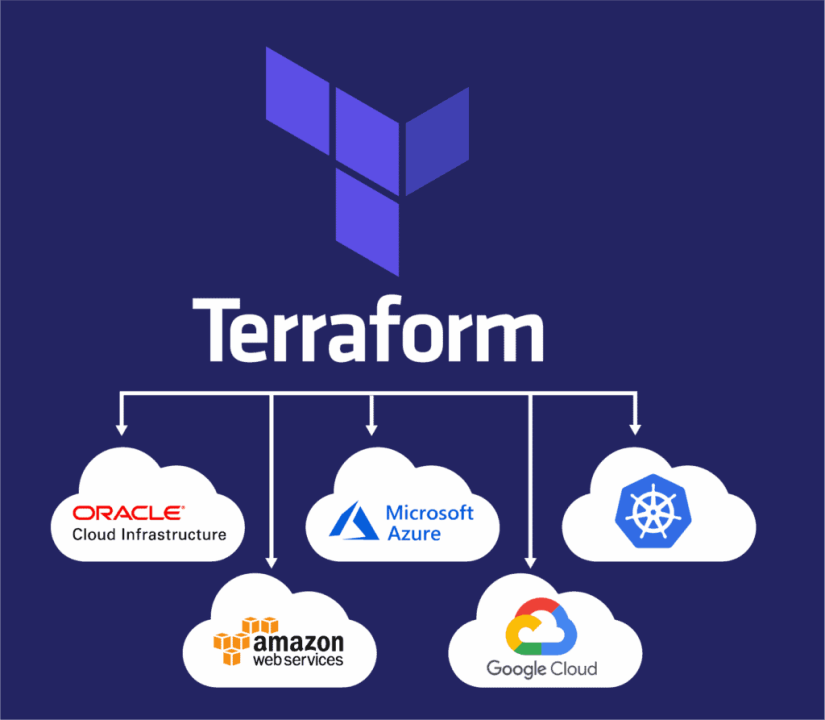Reflections on IaC using Terraform - Part II

This post is a follow up on the previous one where I discussed the concept of infrastructure as code and Terraform. In this post, I will provide few useful notes I took while working on IaC projects, with examples to illustrate the techniques on two of the public providers (AWS / Oracle).
🔖 Note: I'm using whitespace freely to break long lines, which is in most cases not allowed in HCL statements.
Tips and Tricks
-
Collect informative and actionable details about your environment using
datablocks.
Seriously no need to hardcode these ids or names, instead usingdatablocks is one way to query from the external providers, By that, the automation code quality and modularity increase a bit.Here are examples showing how to query for some network resources.
data "aws_vpc" "apps" { filter { name = "tag:Name" values = ["apps-vpc"] } } data "aws_route_tables" "apps" { filter { name = "vpc-id" values = [ data.aws_vpc.apps_vpc.id ] } filter { name = "tag:Name" values = [ "*rt-private-a", "*rt-private-b", "*rt-private-c", } }data "oci_core_drgs" "my_drg" { compartment_id = data.comp.id } -
Introduce variables to dry up and factorize your environment settings.
Conventionally,variables.tffile describes the specification of the configurable variables (type, default, description). Then, the variables are set either interraform.tfvarsfile, passed as command arguments, or environment variables.Reference the vars in your code blocks as follows
${vars.my_var}:# variables.tf variable "c_id" { type = string } variable "routes" { type = list(string) description = "VPN routes." default = [] } # tunnel.tf resource "oci_core_ipsec" "vpn" { compartment_id = var.c_id static_routes = var.routes } -
Use output to express and state unknown information till after the apply.
# user input output "vpc_cidr_range" { value = var.vpc_cidr_range description = "IPs CIDR." } # provisioned resource - aws output "main_zone_id" { value = try( aws_route53_zone.m.zone_id, "" ) } # provisioned resource - oci output "instances_details" { value = module.i.instances_summary } -
Declare a variable with sensitive flag for masking in logs and execution.
output "auth_token" { sensitive = true value = random_password.p.result } -
Add locals to shorten long configuration parts or variables chain.
locals { az = data. aws_availability_zone. main.name_suffix db_name = "${var.prefix]}-db" db_admin_user = "postgres" conf_id = var.db_config_id tags = merge( tomap({ Env = var.env }), var.tags ) } -
Revise the variable types:
string,number,boolean,list,map, andobject.variable "db_ingress_ports" { type = list(object( { port = string } )) } db_ingress_ports = [ { port = "5432" } ] -
Loop through repetitive resources using
countandcount.indexresource "aws_eip" "eips" { count = 1 tags = merge({ "Name" = "lb_ip_${count.index}" }, local.tags) } -
Utilize
hashicorp/randommodule to generate ids or credentials.resource "random_password" "ec2" { length = 20 special = true override_special = "@!-=+" } -
Import child modules into the main module using
sourceattribute from various sources:
local FS, git repository, github, a url, or the public terraform registry.# redshift database deployment, # via external module from the # registry. # module "redshift-db" { source = "terraform-aws-modules/redshift/aws" version = "3.4.1" cluster_identifier = "rd" cluster_number_of_nodes = 2 cluster_node_type = "dc2.large" cluster_database_name = "rd" cluster_master_username = "rd-user" cluster_master_password = random_password.pass.result encrypted = true wlm_json_configuration = jsonencode([ { auto_wlm = true } ]) cluster_iam_roles = [ local.s3_role.iam_role_arn ] subnets = data.aws_subnets.a enhanced_vpc_routing = true publicly_accessible = true vpc_security_group_ids = [] enable_logging = true tags = {} } -
When using multiple modules structure, variables can be passed around in
moduleblock.module "postgres" { source = "../base/oci_pg" tenancy_id = var.tenancy_id db_name = var.postgres_db_name tags = var.tags # etc ... } -
Use
for_eachiteration primitives (.key,value.*) for granular data structure looping over sets.# basic looping. data "aws_subnet" "subnet" { for_each = toset( data.aws_subnets.all.ids ) id = each.value } # basic looping with mapping. resource "aws_route53_record" "cns" { for_each = { for r in var.public_cnames : r[0] => { target : r[1], ttl : r[2] } } zone_id = aws_route53_zone.main.id type = "CNAME" name = each.key ttl = each.value.ttl records = [each.value.target] depends_on = [ aws_route53_zone.main ] } # advanced example. resource "aws_route" "vpn_routes" { for_each = { for i in setproduct( data.aws_route_tables.p.ids, var.vpn_route) : "rt-entry.${i[0]}.${i[1]}" => { rt_id = i[0], cidr = i[1] } } gateway_id = aws_vpn_gateway.vgw.id route_table_id = each.value.rt_id destination_cidr_block = each.value.cidr } -
review the built-in functions of interest to your configurations:
tolist(),toset(),upper(),join(),lower(),max(),endswith(),chomp(),regex(),map(),reverse(),flatten(),file(),base64*(),timestamp(), and much more.locals { prefix = lower(var.acc_prefix) }provider "kubernetes" { cluster_ca_certificate = base64decode( data.aws_eks_cluster.main. certificate_authority. 0.data ) }They come in handy and can help solving several problems.
Refer to the docs here. -
You can add validation rules and message to your module vars in
variables.tf.
Here’s an example:variable "prefix" { type = string validation { condition = length(var.prefix) < 10 error_message = "only less than 10 chars." } } variable "db_storage_iops" { type = string default = "300000" validation { condition = contains( ["300000", "750000"], var.db_storage_iops ) error_message = "Only IOPS: 300K / 750K." } } -
Use the state CLI command to show, list, or manipulate the state once needed (e.g. checking existing values, importing directly modified items outside IaC, etc.).
# view the current state items. terraform state list # clean outdated state. terraform state rm \ "aws_customer_gateway.main" # importing drifted state. terraform import \ "aws_customer_gateway.main" \ "cgw-new-id-XXX" -
Use
terraform consoleto quickly experiment withHCLsyntax and explore the current module data.# testing sorting out lists. ❯ terraform console > > tolist(concat(sort( ["10.200.18.0/24", "10.34.150.0/24", "10.10.100.0/25"] ))) tolist([ "10.10.100.0/25", "10.200.18.0/24", "10.34.150.0/24", ]) >
Final Thought ..
Although, terraform and HCL definition language may have limitation around dynamic behavior sometimes, you will find ways to structure and approach your automation code declaratively, most of the time.